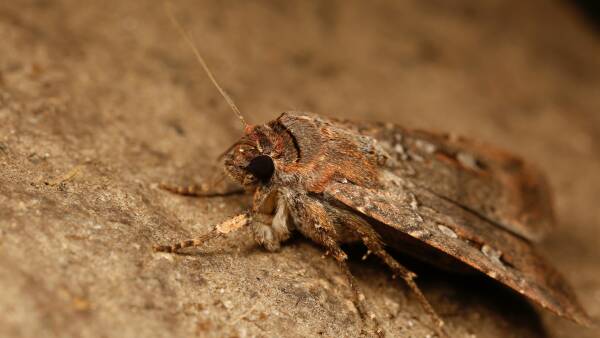
Each spring, the migration of the bogong moth captivates observers in Australia. These small brown insects emerge from the ground in Western Victoria, embarking on a remarkable journey of over 1,000 kilometers to the cool, dark caves of the Snowy Mountains. This annual trek not only showcases their resilience but also highlights their connection to Indigenous Australian culture, where the bogong has been a source of food and a focal point for ceremonies for thousands of years.
As Uncle Warren Ngarrae Foster, a proud Yuin Elder, recounts, various Indigenous groups, including the Bidhawal, Gunaikurnai, Yuin, and Wiradjuri, have a rich cultural history intertwined with the bogong moth. “People have got a lot of stories about the bogong,” he states, emphasizing its significance in community gatherings and cultural practices.
Research conducted by Professor Eric Warrant, a zoologist at Lund University in Sweden, has unveiled intriguing insights into how these moths navigate their extensive migrations. Unlike other migratory insects that rely on an internal compass to sense the Earth’s magnetic field, the bogong moth employs a different strategy: celestial navigation. According to Professor Warrant, nocturnal insects possess remarkable vision, enabling them to see colors in low light. This capability leads him to believe that the bogong uses the stars for orientation during its migration.
To validate this hypothesis, Professor Warrant collaborated with a team from the Australian National University and UniSA. They constructed miniature planetariums and equipped migrating moths with devices that recorded their flying direction five times per second. The results were illuminating. When presented with a star map, the bogongs accurately navigated according to the season, heading northeast in spring and southwest in autumn.
“If you turn the whole starry night sky by 180 degrees, the moth turns and flies in exactly the opposite direction,” Professor Warrant explained. This finding was further confirmed by surrounding the planetariums with Helmholtz Coils to negate Earth’s magnetic field, ensuring that the moths relied solely on the stars for navigation.
The implications of this research extend beyond understanding moth behavior. Professor Javaan Chahl from UniSA believes these insights could revolutionize the development of advanced technologies such as drones and robots. “There’s a lot of demand for really small aircraft for lots of different reasons,” he noted, underscoring the potential for smaller, more intelligent devices that are less dependent on GPS technology.
Current engineering capabilities can produce components weighing only a few grams, while insects operate at a microgram scale. The knowledge gained from studying bogong moth navigation could lead to innovations in drone technology, particularly for nighttime operations. Professor Chahl’s team is already testing drones at night over the deserts of South Australia, exploring alternatives to GPS.
As promising as these developments are, concerns linger about the future of the bogong moth itself. Recent studies indicate a staggering 99.5 percent decline in their population during the last drought, with an overall decrease observed since the 1980s. Researchers are investigating potential causes, including agricultural practices and habitat destruction, yet the exact reasons remain unclear.
While scientists deepen their understanding of the bogong moth, traditional knowledge surrounding this species is at risk. “There’s probably no point getting a feed of them because they’re full of cyanide,” Uncle Warren remarked. The cultural significance of the bogong moth, once a staple in Indigenous diets, is diminishing, alongside the ceremonial practices that once celebrated their presence.
As researchers continue to uncover the mysteries of the bogong moth’s navigation, the intersection of ancient wisdom and modern science may lead to innovations that not only enhance technology but also bring awareness to the importance of preserving both ecological and cultural heritage.







